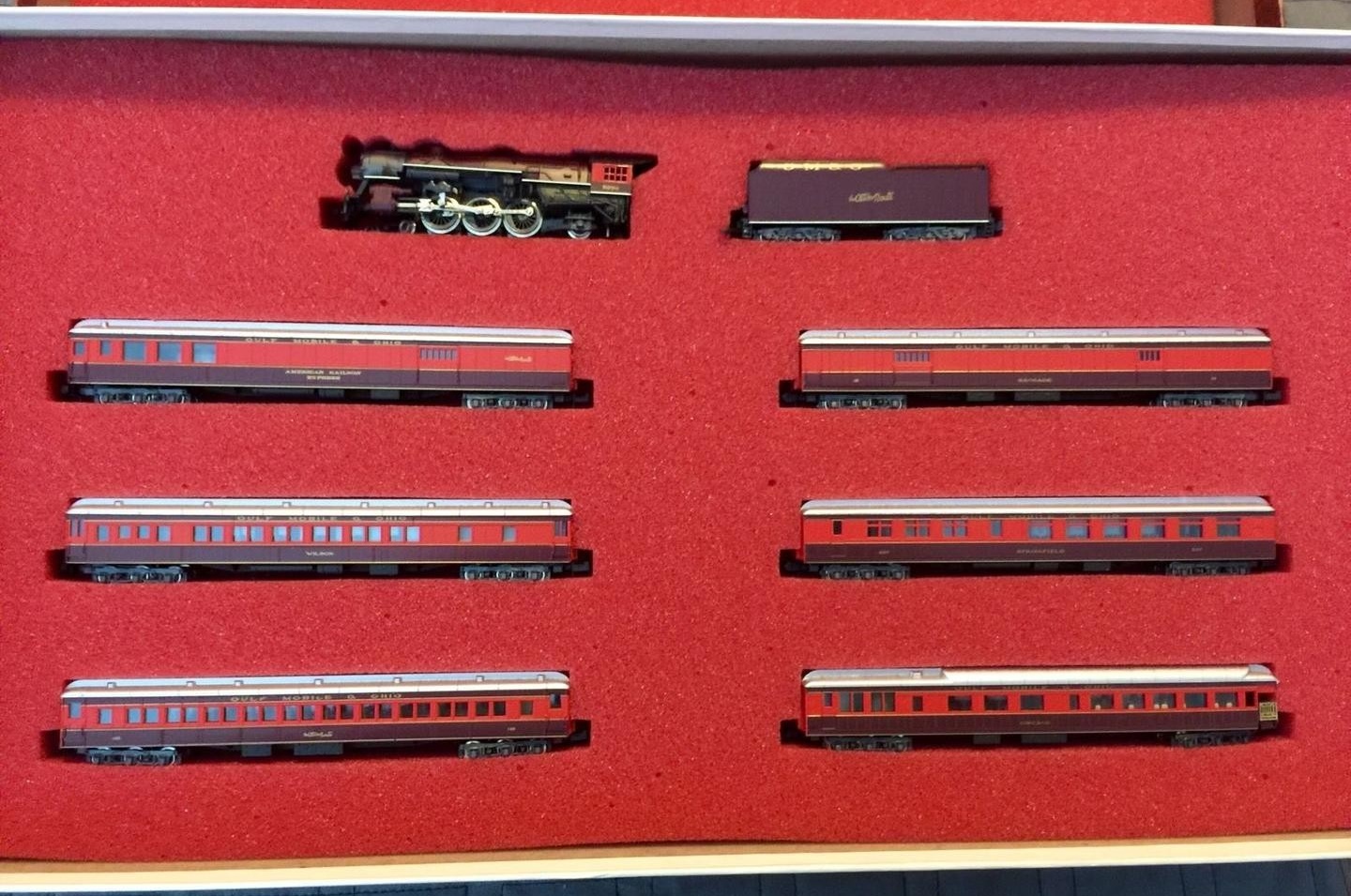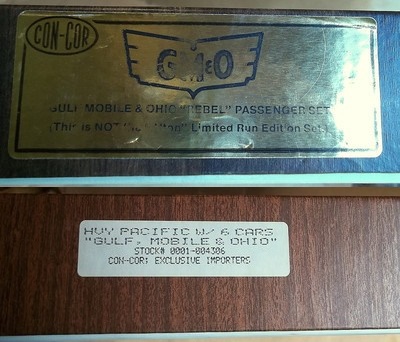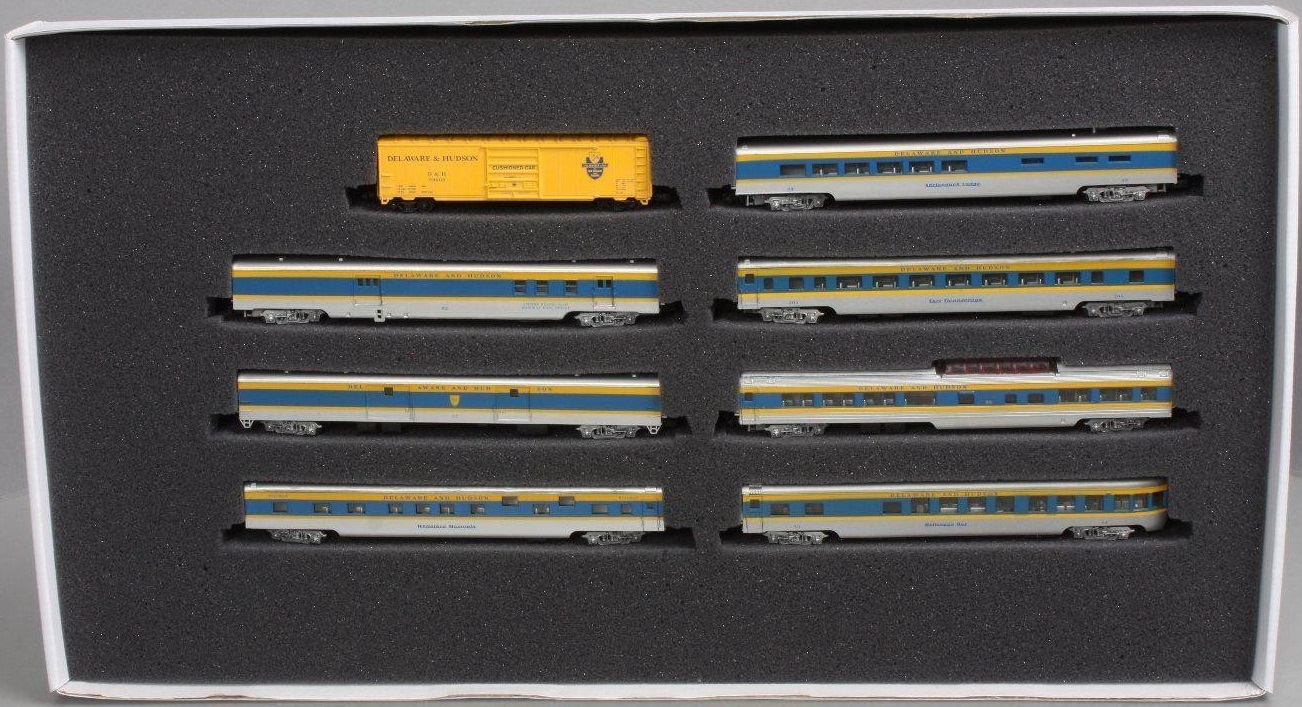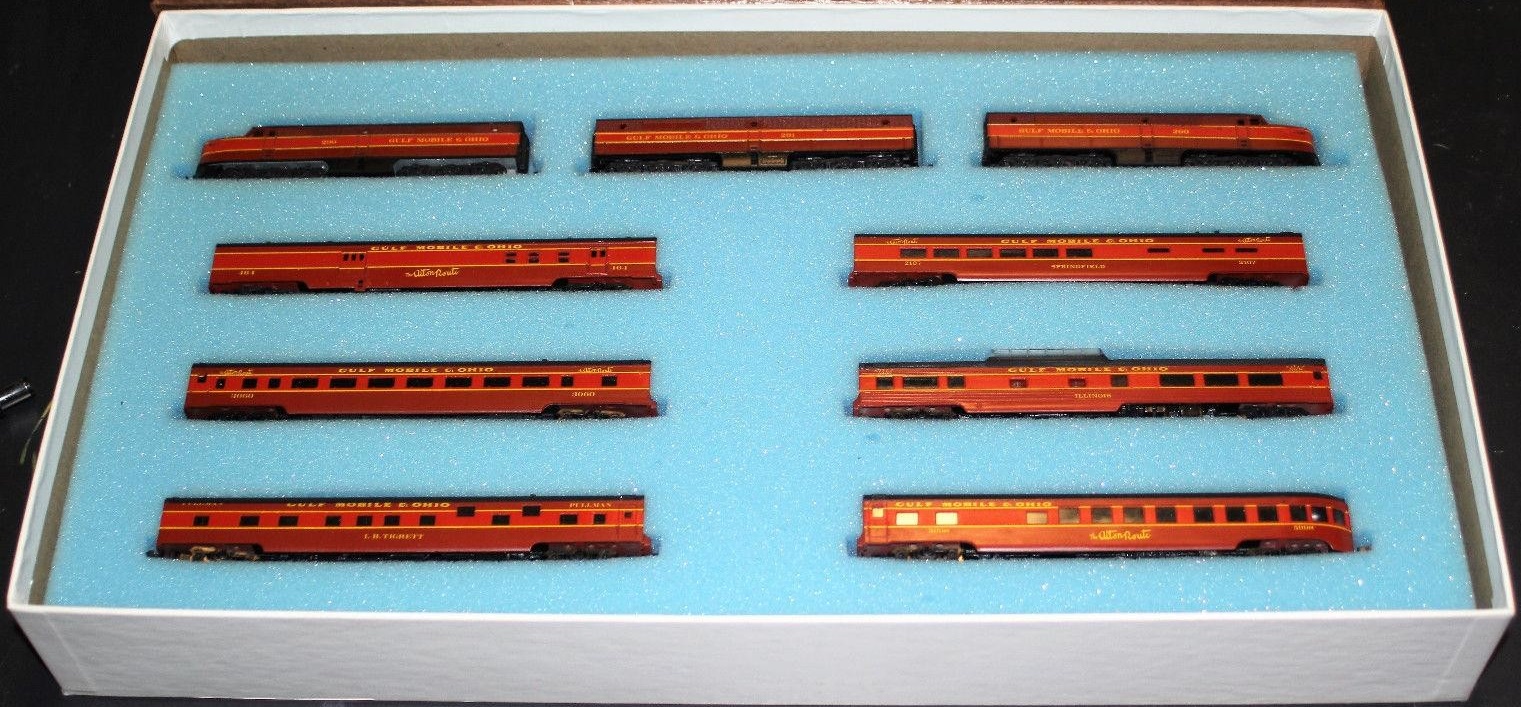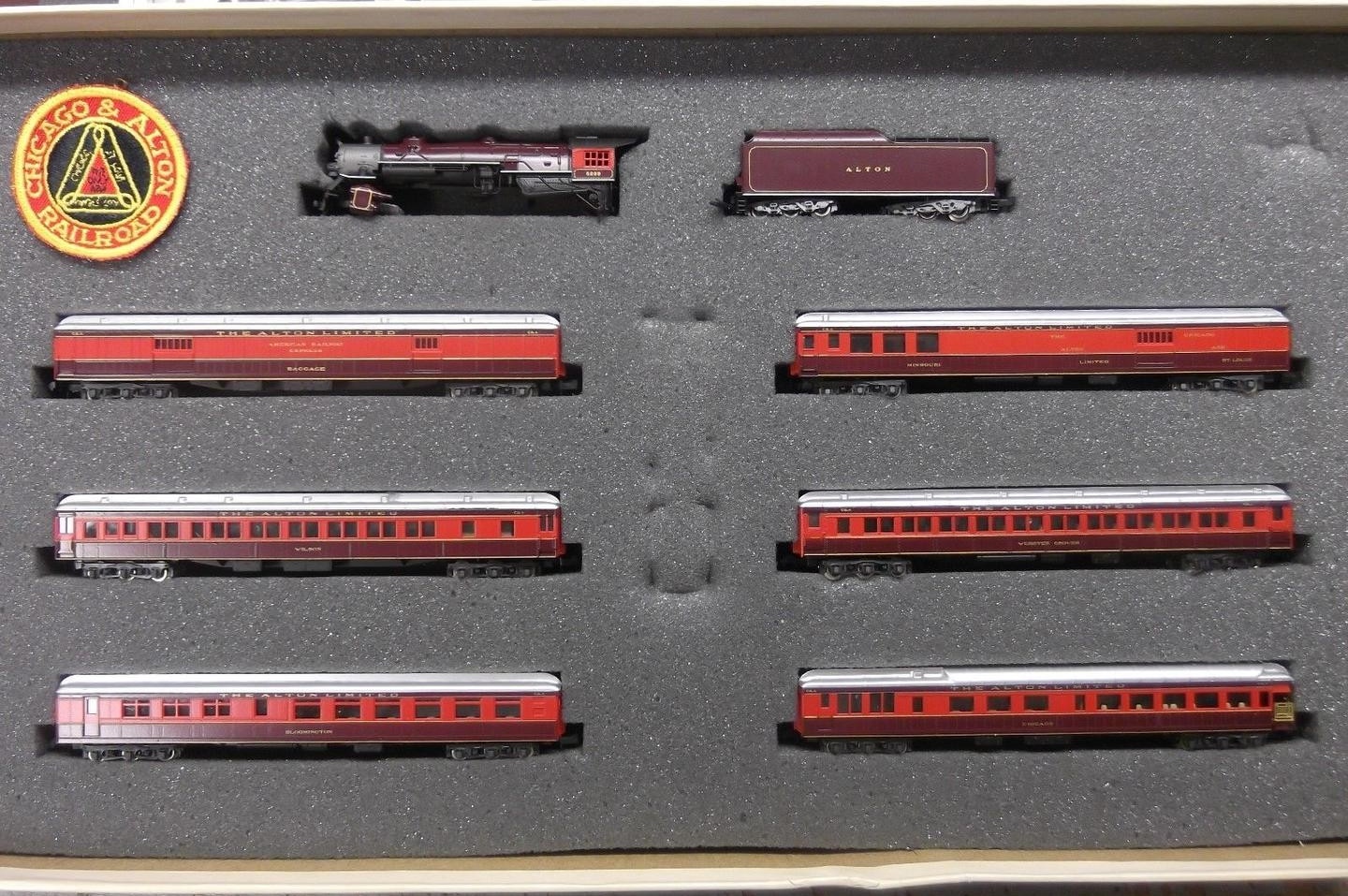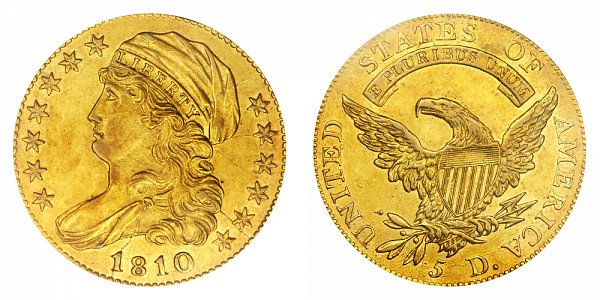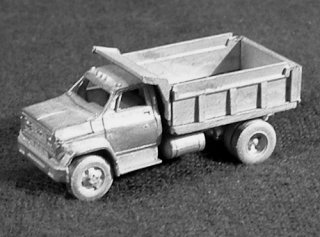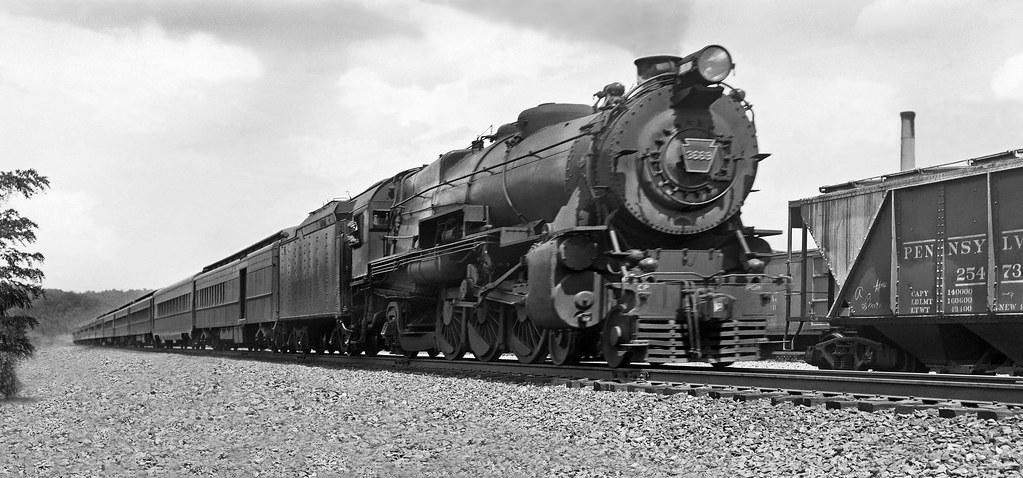Specific Item Information: Gulf, Mobile & Ohio "Rebel" passenger set: one steam locomotive with 6 heavyweight cars.
Very similar to Limited Edition Set #2 "The Alton Limited", but the cars are "Gulf, Mobile & Ohio" instead of "Alton Limited". Box is marked "(This is NOT "The Alton" Limited Run Edition Set)".
Though being sold in a wood-grained cardboard box, this set is not considered as a Limited Run Collector set.
- Rivarossi 9202 Locomotive Steam 4-6-2 (Heavy Pacific) #5299 & 6-axle tender
- Rivarossi Baggage #26 "American Railway Express/Baggage"
- Rivarossi RPO
- Rivarossi Coach #140
- Rivarossi Pullman "Wilson"
- Rivarossi Diner #2107 "Springfield"
- Rivarossi Observation "Chicago"
(all heavyweight cars)
Very similar to Limited Edition Set #2 "The Alton Limited", but the cars are "Gulf, Mobile & Ohio" instead of "Alton Limited". Box is marked "(This is NOT "The Alton" Limited Run Edition Set)".
Though being sold in a wood-grained cardboard box, this set is not considered as a Limited Run Collector set.
- Rivarossi 9202 Locomotive Steam 4-6-2 (Heavy Pacific) #5299 & 6-axle tender
- Rivarossi Baggage #26 "American Railway Express/Baggage"
- Rivarossi RPO
- Rivarossi Coach #140
- Rivarossi Pullman "Wilson"
- Rivarossi Diner #2107 "Springfield"
- Rivarossi Observation "Chicago"
(all heavyweight cars)
Series Information: Con-Cor "Special Edition Sets" or "Special Limited Edition Sets" were the result of Con-Cor using the last of their stock of cars. Several new molds had to be made to accomplish this project as the original molds by Röwa had been destroyed in a fire. Several Röwa passenger cars in these sets were delivered unnumbered.
There has been two subseries:
First subseries - mid to end 1980s: These sets are furnished with usual wood-grained cardboard box that was used for the "Limited Edition sets'. The label does not have any mention of "Special" or "Limited" set. They contain locomotives and cars.
Second subseries - early 2000s: These sets were delivered in the colorful packaging 'Great American Trains' that was also used for the latest of the "Limited Edition Sets". They are marked " Special Edition Set" on the side label. They contain only cars; the matching locomotives were sold as separate items.
In this series, we have also listed sets that were delivered in the "Limited Edition Set" packaging, though not necessarily being 'Limited' in the sense that the locomotive and cars were generally available from open stock.
There has been two subseries:
First subseries - mid to end 1980s: These sets are furnished with usual wood-grained cardboard box that was used for the "Limited Edition sets'. The label does not have any mention of "Special" or "Limited" set. They contain locomotives and cars.
Second subseries - early 2000s: These sets were delivered in the colorful packaging 'Great American Trains' that was also used for the latest of the "Limited Edition Sets". They are marked " Special Edition Set" on the side label. They contain only cars; the matching locomotives were sold as separate items.
In this series, we have also listed sets that were delivered in the "Limited Edition Set" packaging, though not necessarily being 'Limited' in the sense that the locomotive and cars were generally available from open stock.
Prototype History: During the transition period (1939 - 1957), it was common to see both steam and diesel motive power on North American railroads. However, it wasn't the case that the only steam locomotives were leftovers from the war. Many new model steam engines were produced during this period. These were the latest and best technology that steam technology produced. These were especially common on coal hailing routes where fuel was plentiful, but steam was also common on passenger routes.
One example was the Norfolk and Western J class. These pulled some of their flagship named trains such as the Pochontas, Powhattan Arrow and the Cavalier. Steam passenger service continued well into the 1950s when N&W started the dieselization process.
One example was the Norfolk and Western J class. These pulled some of their flagship named trains such as the Pochontas, Powhattan Arrow and the Cavalier. Steam passenger service continued well into the 1950s when N&W started the dieselization process.
Road Name History:  The GM&O was the product of the 1940 merger of Gulf Mobile & Northern and the Mobile & Ohio. During these early years, the GM&O consisted of a route from St. Louis south to Jackson, Tennessee where it then split into 2 routes to the port of Mobile, Alabama. In addition, there were routes to Memphis, Tennessee; Jackson, Mississippi; and Birmingham and Montgomery, Alabama. GM&O also served New Orleans and Paducah via trackage rights. The merger was championed by Ike Tigrett from the GM&N and Ike would lead the GM&O for most of its history.
The GM&O was the product of the 1940 merger of Gulf Mobile & Northern and the Mobile & Ohio. During these early years, the GM&O consisted of a route from St. Louis south to Jackson, Tennessee where it then split into 2 routes to the port of Mobile, Alabama. In addition, there were routes to Memphis, Tennessee; Jackson, Mississippi; and Birmingham and Montgomery, Alabama. GM&O also served New Orleans and Paducah via trackage rights. The merger was championed by Ike Tigrett from the GM&N and Ike would lead the GM&O for most of its history.
In 1947, GM&O acquired the Alton Railroad. This linked Chicago and Peoria with St. Louis and Kansas City. This acquisition made GM&O a Great Lakes to the Gulf carrier and pushed the mileage up over 2,700. GM&O tried to sell the Kansas City line in the 50’s to Santa Fe and Burlington but there was tremendous pressure from other lines to keep Santa Fe out of St. Louis. In the end, GM&O kept the route and Burlington got trackage rights on a portion of it to shorten its own route.
GM&O dieselized early with the last steam locomotive retired in 1949. The first generation freight diesel fleet included Alco switchers, road switchers (all of which were long-hood-forward,) and FA series cab units and EMD F units. For passenger service, GM&O had power from both Alco and EMD. Everything was painted red and maroon with gold lettering. Both Alton and GM&N had used red in the past so this was appropriate. The oddball of the fleet was #1900, a cab unit model 4-S built by Ingalls Shipbuilding. It was the only locomotive Ingalls would ever build.
The 60’s brought fleets of GP30’s and 35’s. These were delivered on Alco trucks from traded in FA’s and wore a new black and white paint scheme designed by EMD. A few years later, more new power arrived from EMD, this time GP38’s and SD40’s wearing two variations of red and white. First generation diesels still on the roster received solid red or maroon in some cases. The diesel fleet consisted of around 260 units.
As for passenger service, The Rebels ran south of St. Louis with a train each to New Orleans and Mobile. Seven trains a day connected St. Louis and Chicago – more than all other railroads combined between those cities. These included the Abraham Lincoln, Ann Rutledge, and Alton Limited. They also had a single daily Chicago commuter train called The Plug. Amtrak took over three of the Chicago – St. Louis departures in 1971.
By contemporary accounts, GM&O was a class operation with a thin layer of responsive management, esprit de corps in the ranks, and good track - all of this despite serving one of the poorest regions of the country. As the 1960s drew to a close, GM&O faced the impending retirement of the original management team. Because the management layer was so thin, there were few young up-and-comers being groomed to take their places. So, to protect the shareholders, GM&O began shopping for merger partners. In 1972, Gulf Mobile & Ohio merged with Illinois Central to form Illinois Central Gulf.

In 1947, GM&O acquired the Alton Railroad. This linked Chicago and Peoria with St. Louis and Kansas City. This acquisition made GM&O a Great Lakes to the Gulf carrier and pushed the mileage up over 2,700. GM&O tried to sell the Kansas City line in the 50’s to Santa Fe and Burlington but there was tremendous pressure from other lines to keep Santa Fe out of St. Louis. In the end, GM&O kept the route and Burlington got trackage rights on a portion of it to shorten its own route.
GM&O dieselized early with the last steam locomotive retired in 1949. The first generation freight diesel fleet included Alco switchers, road switchers (all of which were long-hood-forward,) and FA series cab units and EMD F units. For passenger service, GM&O had power from both Alco and EMD. Everything was painted red and maroon with gold lettering. Both Alton and GM&N had used red in the past so this was appropriate. The oddball of the fleet was #1900, a cab unit model 4-S built by Ingalls Shipbuilding. It was the only locomotive Ingalls would ever build.
The 60’s brought fleets of GP30’s and 35’s. These were delivered on Alco trucks from traded in FA’s and wore a new black and white paint scheme designed by EMD. A few years later, more new power arrived from EMD, this time GP38’s and SD40’s wearing two variations of red and white. First generation diesels still on the roster received solid red or maroon in some cases. The diesel fleet consisted of around 260 units.
As for passenger service, The Rebels ran south of St. Louis with a train each to New Orleans and Mobile. Seven trains a day connected St. Louis and Chicago – more than all other railroads combined between those cities. These included the Abraham Lincoln, Ann Rutledge, and Alton Limited. They also had a single daily Chicago commuter train called The Plug. Amtrak took over three of the Chicago – St. Louis departures in 1971.
By contemporary accounts, GM&O was a class operation with a thin layer of responsive management, esprit de corps in the ranks, and good track - all of this despite serving one of the poorest regions of the country. As the 1960s drew to a close, GM&O faced the impending retirement of the original management team. Because the management layer was so thin, there were few young up-and-comers being groomed to take their places. So, to protect the shareholders, GM&O began shopping for merger partners. In 1972, Gulf Mobile & Ohio merged with Illinois Central to form Illinois Central Gulf.
Brand/Importer Information: Con-Cor has been in business since 1962. Many things have changed over time as originally they were a complete manufacturing operation in the USA and at one time had upwards of 45 employees. They not only designed the models,but they also built their own molds, did injection molding, painting, printing and packaging on their models.
Currently, most of their manufacturing has been moved overseas and now they import 90% of their products as totally finished goods, or in finished components. They only do some incidental manufacturing today within the USA.
Important Note: The Con-Cor product numbering can be very confusing. Please see here in the article how to properly enter Con-Cor stock numbers in the TroveStar database.
Currently, most of their manufacturing has been moved overseas and now they import 90% of their products as totally finished goods, or in finished components. They only do some incidental manufacturing today within the USA.
Important Note: The Con-Cor product numbering can be very confusing. Please see here in the article how to properly enter Con-Cor stock numbers in the TroveStar database.
Item created by: Alain LM on 2019-05-13 17:43:56. Last edited by Alain LM on 2020-05-31 05:21:40
If you see errors or missing data in this entry, please feel free to log in and edit it. Anyone with a Gmail account can log in instantly.
If you see errors or missing data in this entry, please feel free to log in and edit it. Anyone with a Gmail account can log in instantly.


